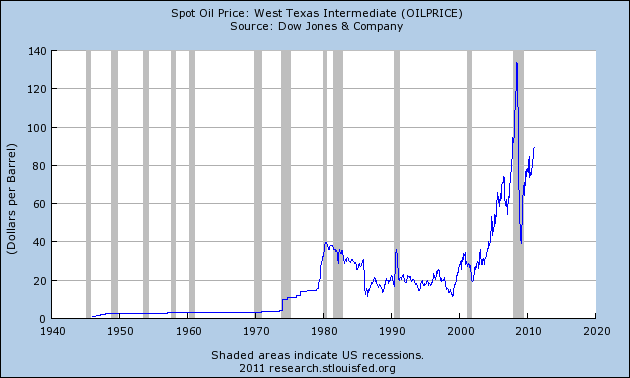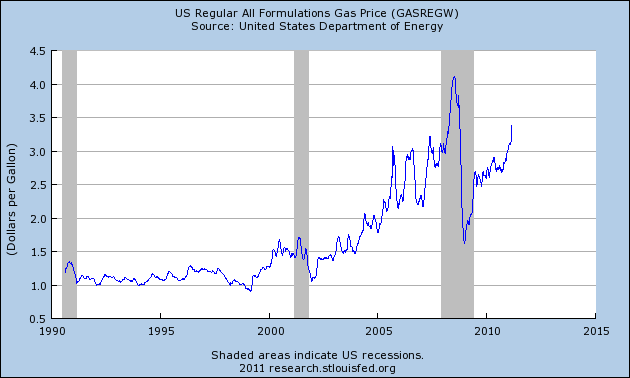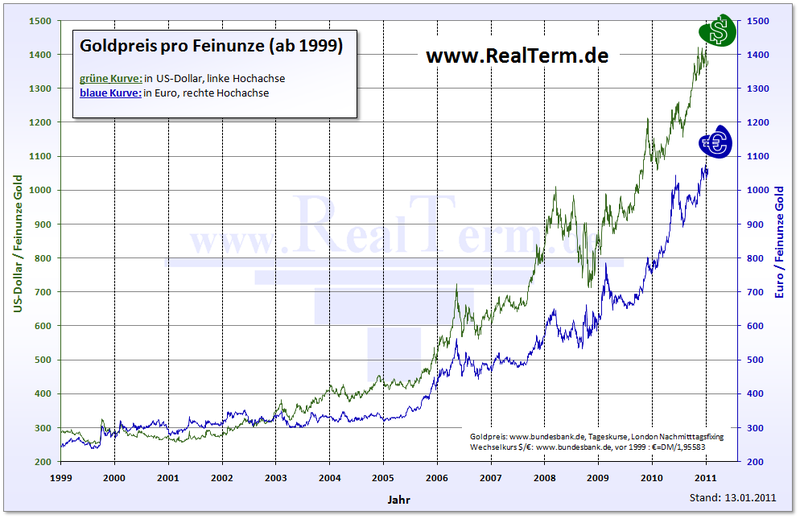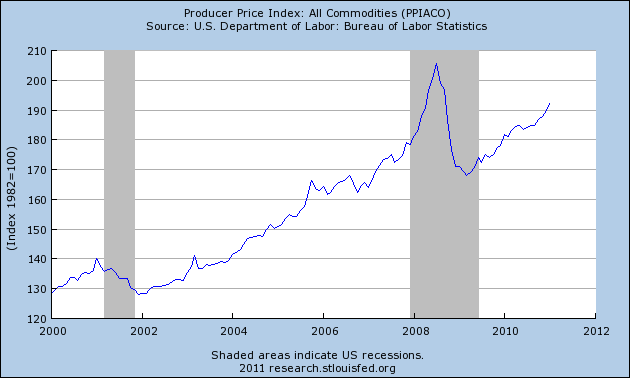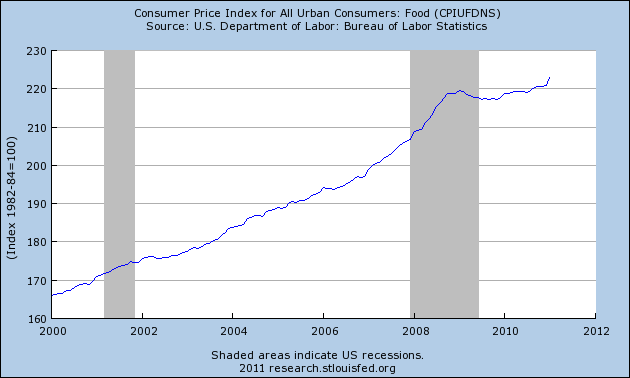Wednesday, March 2, 2011
From Hal Lindsey

February 25th, 2011
Yogi Berra, the Yankee Hall-of-Famer, is famous for standing phrases on their heads. One of his most endearing and enduring twists of phrase is, "This is like deja vu all over again." Obviously wrong, totally redundant, but spot on! Somehow, that misspoken phrase perfectly captures the essence of its meaning. It IS something that's happened before happening again.
Well, recent international developments seem like "deja vu all over again." It's the Middle East and it's 1979. It's a hated and secular leader of a U.S. ally. No, wait, it's the Middle East, but it's 2011. Yet it's a hated and secular leader of a U.S. ally. Am I in a time warp?
In 1979, it was an American President who was a weak leader and foreign policy waffler who mistakenly thought that by appeasing the Muslim radicals and dumping a longtime ally, he could bring peace to the region. But in 2011... it's an American President who is a weak leader and foreign policy waffler who mistakenly thinks that by appeasing the Muslim radicals and dumping a longtime ally, he can bring peace to the region!
But there's more insanity. In 1979, it was the exiled Ayatollah Rhuhollah Khomeini triumphantly returning to Iran (with the help of the US) to soon found The Islamic Republic of Iran -- a thorn in the side of the West for the last three decades. In 2011, it's the exiled Yusuf al-Qardawi triumphantly returning to Egypt (with the help or, at least, the acquiescence of the US) to preach to hundreds of thousands of Muslims attending the "Victory March" in Tahrir Square less than a week after the fall of the Mubarak government. Oh, Yogi, where are you? Help me make some sense of this! This is likedeja vu all over again!
Is The Islamic Republic of Egypt the next item on the agenda?
Speaking of Iran and 1979 and Egypt. Something happened this week in the Middle East that hasn't happened since 1979. Two Iranian warships passed through the Suez Canal from the Red Sea into the Mediterranean. Until now, the Iranians would have never even requested permission to transit the canal because they knew Hosni Mubarak would never grant it. As Bob Dylan sang, "The times, they are a-changin'" Though the ships, a frigate and a supply tender, are declared to be free of contraband (like missiles for Hezbollah in Lebanon and Hamas in Gaza) and on an innocent training mission to Syria, the event signals a sea change in the Middle East geopolitical picture.
And though Libya is the hot spot of revolutionary fervor this week, the Persian Gulf island nation of Bahrain has been experiencing its own uprising. Embroiled in a proxy battle between the Shi'ites of Iran (who are seeking to gain a foothold on the Arabian Peninsula) and the Sunnis of Saudi Arabia, the tiny sectarian state -- which is ruled by the Sunni minority -- is just the latest pro-Western, secular state to be targeted by 'pro-democracy' protesters. The U.S. has a vested interest in what happens in that tiny nation because it serves as the home of the U.S. Navy's Fifth Fleet in the Persian Gulf.
For a long time, we've been watching the relationship between Venezuela and Iran, Chavez and Ahmadinejad, grow ever warmer and more deeply entrenched. The sinister implications of this alliance are even more ominous in view of the developing danger to America's soft underbelly presented by the virtual anarchy in Mexico and the rogue regimes springing up around the Caribbean in places like Nicaragua, Bolivia, and, of course, Cuba. Some leading intelligence experts are becoming concerned that Iran might use Venezuela as the launching point for a simple, yet clever attack on the United States -- an attack that we know Iran has been planning and even practicing for in recent years.
I've covered this story before, but as each year passes, it becomes an even greater possibility.
I guess you've been watching the vehement protests and, in some cases, the outright street battles taking place between the bankrupt government and the 'entitled' union classes who want their money and benefits no matter what it costs or who it hurts. No, I'm not talking about Wisconsin. I'm talking about Greece. Actually, this is the second act in the Grecian drama. The first violent upheaval subsided after the Greek government begged a $150 billion bailout from the world. But now that that money's gone and the European Union is demanding that Greece clean up its act and take solid austerity steps to avoid total financial collapse, the unions and the entitled masses have hit the streets again. I just keep watching this and wondering, "Where do they think the money is going to come from? When are they going to realize they have to shoulder some of the responsibility for their own financial futures like the rest of us."
Hey, wait, maybe I am talking about Wisconsin! At least some of the public sector unions in Wisconsin. Yogi, where are you?
hostgator coupon 2011
Global currency reform delayed
It appears that the global currency system won't be reformed any time soon, despite all the talk from international officials. The summit of G20 finance ministers and central bank representatives held last week in Paris was further evidence of the inertia in the global economy. Ostensibly, the purpose of the meeting was to discuss reforming the currency system, but the finance officials could only agree on the need to create a system of indicators to reveal weak spots and imbalances in the global economy.
A child of the crisis
The G20 rose to prominence during the global financial and economic crisis. The global challenge demanded a global solution. But the group of the world's twenty largest economies has so far failed to prove itself as an effective regulator of the global economy. When the crisis was at its peak, G20 heads of state and international officials tried to hash out an agreement on a coordinated response, but each nation ultimately pursued a recovery policy that best suited its interests. So no one is expecting any breakthroughs from the G20.
Finance officials continue to haggle over who is to blame for the numerous, persistent risks to the global economy. The economy is still unstable, and markets are becoming increasingly volatile. And yet the developed and the developing worlds are worlds apart on how to address the lingering problems.
Nor has meaningful progress been made toward the creation of a new global financial system. The United States and other advanced countries seem intent on continuing their policies of monetary stimulus. The U.S. Federal Reserve System is carrying out a program to pump $600 billion into the U.S. economy by buying up treasury bonds.
This anti-crisis liquidity injection has come under considerable criticism around the world. Critics contend that a considerable portion of the new liquidity is being used by financial institutions for speculation, and that the flow of speculative capital around the world endangers the economies of the developing countries.
What's more, these measures preserve the status quo in the global financial system rather than encourage the formation of a new one.
Monitoring the problem
The main achievement of the Paris forum was a tentative agreement to develop a system of indicators that would alert officials to imbalances in the global economy, in particular, the risk of bubbles. This system is intended as a first step toward sustainable economic development and a way to avoid conflicts like the currency wars that shook the economy last fall. The list of indicators includes budget deficit, foreign debt, private savings, current accounts balance and trade balance.
Two more indicators were supposed to be included in the agreement - national currency exchange rate and foreign exchange reserves. But Brazil and China objected.
China has the largest foreign exchange reserves in the world, valued at $2.7 trillion, and it is very sensitive about anything related to exchange rates. It takes umbrage when its trade partners (especially the United States) push for a change in China's currency policy. China is looking out for its own interests. A weak RMB makes Chinese exports even more competitive on the world market. China's main trade partner, the United States, has insisted for years that China allow its currency to appreciate to eliminate its unfair export advantage. Ultimately, the finance ministers agreed that the last two indicators will not include concrete figures.
There is still much to be done before this economic monitoring system starts functioning. For instance, thresholds for the indicators must be established, and an appropriate course of action in the event that they are exceeded must be worked out. It is not clear when this will be accomplished. The participants in the forum have agreed only to continue debating the system of indicators in the spring.
The views expressed in this article are the author's and may not necessarily represent those of RIA Novosti.
hostgator coupon 2011
Inflation Is Here – Just Open Up Your Eyes And Look At These 5 Financial Charts!
Despite what Federal Reserve Chairman Ben Bernanke says, rampant inflation is officially here. The federal government is constantly monkeying with the numbers to keep the "official" rate of inflation below 2 percent, but it is becoming very difficult to deny that the cost of almost everything is really going up these days. The American people are not stupid. They notice the difference when they go to the grocery store or stop at the gas station. The dollar is losing value rapidly now. The price of gold set another new all-time record today and is currently hovering just above $1430 an ounce. The price of West Texas crude has moved above 100 dollars several times recently and the price of Brent crude is currently above 116 dollars. These higher oil prices are really starting to be felt in the United States. The average price for a gallon of gasoline in the United States has now reached $3.38. There are some gas stations in the U.S. where the price of a gallon of gas is already over 4 dollars. But it is not just the American people that are feeling the pain. The global price of food recently hit a new record high and almost every major agricultural commodity has absolutely skyrocketed in price over the past 12 months. Meanwhile, Ben Bernanke just told the Senate Banking Committee that he really isn't concerned about inflation at all.
When it comes to inflation, the key is not to look at the official U.S. government numbers (they are highly manipulated) or how the U.S. dollar is performing against other major currencies (because they are all being devalued as well). Instead, you can get a truer sense of what is really happening to inflation by looking at what the U.S. dollar is doing against precious metals, commodities and other hard assets.
So are we experiencing rampant inflation right now? Well, just open up your eyes and look at these 5 charts....
1 - The price of oil is racing back up to record levels. The chart below from the Federal Reserve is a couple weeks out of date. As noted above, the current price of West Texas crude is about $100 a barrel....
2 - The price of a gallon of gasoline in the United States seems destined to hit a brand new all-time record at some point this year. Was it really just a few short years ago when the average price of gas in this country was about a dollar a gallon?....
3 - The value of most precious metals is very consistent over time. So when you see precious metals go up dramatically in price, it means that the dollar is being devalued. The price of gold just set another new all-time high and it seems destined to keep going even higher....
4 - The chart below from the Federal Reserve is a measure of the price of all commodities. These price increases are inevitably going to be passed along to consumers in the United States....
5 - After a couple of years of stable food price, the price of food is starting to take off yet again....
In fact, many analysts are warning that we could experience a major food crisis over the next couple of years. The global demand for food continues to grow at a very brisk pace, but all of the crazy weather we have been having around the world has caused some very bad harvests.
Unfortunately, the global price of food has gone up substantially in recent months and it is likely to keep going up very rapidly. Just consider the following five facts....
#1 The United Nations says that the global price of food hit another new all-time high during the month of January.
#2 The price of corn has doubled in the past six months.
#3 The price of wheat has roughly doubled since the middle of 2010.
#4 According to Forbes, the price of soybeans is up about 50% since last June.
#5 The United Nations is projecting that the global price of food will increase by another 30 percent by the end of 2011.
Ouch.
But isn't there some good economic news?
Yes, there is, but before we cover it, it is important to keep in mind that in an inflationary environment almost all economic numbers go up.
For example, during the recent hyperinflation in Zimbabwe stocks went up like crazy and "economic growth" statistics were very impressive.
Why?
Because those numbers were measured in currency units that were being devalued at a blinding pace.
So please keep that in mind when you hear "good economic statistics" on the evening news.
The truth is that in an inflationary environment such as we have now entered into almost all economic numbers should be going up.
So what is the good news?
Well, last month all three major U.S. car companies reported strong sales gains. Sales of GM vehicles were up 49%, sales of Chrysler vehicles were up 13%, and sales of Ford vehicles were up 10%.
But just because a few pieces of good economic news come floating our way does not mean that we should forget all of the horrific long-term economic trends that are tearing this country apart.
The truth is that we are still a nation that is absolutely drowning in debt.
For example, it was just announced that China now owns 1.16 trillion dollars of U.S. government debt.
The borrower is the servant of the lender. We should never forget that.
Also, the U.S. economy is slowly but surely becoming of less importance on the global stage.
In 1985, America's share of global GDP was 33%. Today, it is just 24%.
Our nation is rapidly being deindustrialized and we are becoming deeply dependent on industrial production from other nations.
Did you know that the new World Trade Center that is being constructed on the site of the September 11, 2001 attacks is going to be made from German steel and Chinese glass?
That says a lot about where we are at as a country.
We have allowed so much of our industrial infrastructure to be exported to China where workers slave away in almost unbelievable conditions.
A reader named Rish recently described what things are like over there....
As a product developer I went to china and saw the way the factory workers lived and worked in person. 50$ a month is about right, but if you are a skilled quality control expert you might make as much as 150$. at least this was true about 2 years ago the last time I went. The barracks were pretty meager, bunk beds with just plywood, no mattresses, if you wanted you could go to a store just outside the factory gate and buy a thick comforter that they sell as a “mattress” .It will be interesting to see how the next few years changes the face of the USA. Who knows? if the unemployment rate and lack of jobs keeps going and enough people become homeless, we might become the next Bangladesh, and people will be lining up of the 30 cents an hour corporate factory jobs, and living in barracks just like those…
The only way the U.S. has been able to "thrive" during thisdeindustrialization is by borrowing gigantic amounts of money. But all of this borrowing is slowly but surely destroying the U.S. dollar, and we are getting closer to the point of absolute catastrophe.
Peter Schiff recently shook folks up when he talked about these issues during a recent interview on CNBC....
But it is not just the United States that is printing tons and tons of money. All of the major industrialized nations have been firing out gobs of currency. That is a huge reason why so many investors have been racing to get into hard assets recently.
Now Ben Bernanke and other top Federal Reserve officials have been dropping hints that more quantitative easing may be necessary.
Unfortunately, just like with any other addiction, once you give in a few times it becomes easier and easier to engage in destructive behavior. Now that the Fed has gotten a taste for quantitative easing it is going to be really hard to stop.
Nor can the Fed stop at this point. If they did it would be disastrous for the U.S. economy. But if the Fed continues on this reckless course it will make the eventual collapse of our economy even worse.
Under our current debt-based system there is no way out. The Federal Reserve can attempt to put off the inevitable for a while by pumping up the debt bubble even more, but at some point it is going to burst.
When that happens we are going to be facing a financial crisis which will blow what happened in 2008 completely out of the water.
So enjoy these good economic times while you still can. This is about as good as things are going to get from here on out.
hostgator coupon 2011
A Legal Manual for an Apocalyptic New York
What would be the reason to have an Apocalyptic manual if they think that the apocalypse will not happen???

Major disasters like terrorist attacks and mass epidemics raise confounding issues for rescuers, doctors and government officials. They also pose bewildering legal questions, including some that may be painful to consider, like how the courts would decide who gets life-saving medicine if there are more victims than supplies.
hostgator coupon 2011

Major disasters like terrorist attacks and mass epidemics raise confounding issues for rescuers, doctors and government officials. They also pose bewildering legal questions, including some that may be painful to consider, like how the courts would decide who gets life-saving medicine if there are more victims than supplies.
But courts, like fire departments and homicide detectives, exist in part for gruesome what-ifs. So this month, an official state legal manual was published in New York to serve as a guide for judges and lawyers who could face grim questions in another terrorist attack, a major radiological or chemical contamination or a widespread epidemic.
Quarantines. The closing of businesses. Mass evacuations. Warrantless searches of homes. The slaughter of infected animals and the seizing of property. When laws can be suspended and whether infectious people can be isolated against their will or subjected to mandatory treatment. It is all there, in dry legalese, in the manual, published by the state court system and the state bar association.
The most startling legal realities are handled with lawyerly understatement. It notes that the government has broad power to declare a state of emergency. “Once having done so,” it continues, “local authorities may establish curfews, quarantine wide areas, close businesses, restrict public assemblies and, under certain circumstances, suspend local ordinances.”
Ronald P. Younkins, the chief of operations for the state court system, said the book’s preparation was similar to other steps the New York courts had taken to plan for emergencies, including stockpiling respirators and latex gloves. Like such manuals in other states, Mr. Younkins said, it is intended to give judges and lawyers a place to turn in an emergency because the maze of state and federal laws — some decades or centuries old — can be difficult to decipher. For judges, the manual may well be their only refresher on the case of Mary Mallon, “Typhoid Mary,” who was isolated on an East River island from 1915 until her death in 1938.
“It is a very grim read,” Mr. Younkins said. “This is for potentially very grim situations in which difficult decisions have to be made.”
Published with the disarmingly bland title “New York State Public Health Legal Manual,” the doomsday book does not proclaim new law but, rather, describes existing law and gives lawyers and judges ways of analyzing any number of frightening situations.
The manual provides a catalog of potential terrorism nightmares, like smallpox, anthrax or botulism episodes. It notes that courts have recognized far more rights over the past century or so than existed at the time of Typhoid Mary’s troubles. It details procedures for assuring that people affected by emergency rules get hearings and lawyers. It mentions that in the event of an attack, officials can control traffic, communications and utilities. If they expect an attack, it says, they can compel mass evacuations.
But the guide also presents a sober rendition of what the realities might be in dire times. The suspension of laws, it says, is subject to constitutional rights. But then it adds, “This should not prove to be an obstacle, because federal and state constitutional restraints permit expeditious actions in emergency situations.”
When there is not enough medicine for everyone in an emergency, it notes, there is no clear legal guidepost. It suggests legal decisions would most likely involve an analysis that “balances the obligation to save the greatest number of lives against the obligation to care for each single patient,” perhaps giving preference to those with the best chance to survive. It points out, though, that elderly and disabled people might have a legal claim if they are discriminated against at such moments of crisis.
Donna Lieberman, the executive director of the New York Civil Liberties Union, said the 88-page book reminded her of the CliffsNotes pamphlets that have helped generations of 11th graders get through Macbeth. “Needless to say, this makes me a little nervous,” she said, adding that the legal issues the book raised were “nuanced, thorny and difficult, and hard to capture in CliffsNotes.”
In separate forewords, the state’s chief judge, Jonathan Lippman, and the bar association’s president, Stephen P. Younger, say public-health threats are more apparent than ever, so the legal questions ought to be considered now, not during an emergency.
If nothing else, the book is intensely practical, giving lawyers and judges a way to get through what would quite likely be chaotic days.
After mentioning that houses or businesses can be commandeered to shelter victims or serve as medical dispensaries, it continues that “violations of individual property rights, if actionable, would generally be sorted out after the need for such actions has ended.” The court system posted an electronic copy of the book on its Web site on Thursday, and the bar association is selling bound copies for $18 to the public. The book was edited by Michael Colodner, the former counsel to the state’s Office of Court Administration.
In its matter-of-fact way, it conjures an image of the courts muddling through in an apocalyptic city. But it makes clear that it is in just such circumstances that it may be more important than ever for the courts to remain open to grapple with the legal questions created by the emergency itself.
Without mentioning that judges and other court officials themselves may be among the dead or injured, the manual says that when there is a shortage of court personnel, administrators can take any number of steps to keep the courts operating. It says they can hold multiple proceedings before a single judge, change rules of procedure and give priority to cases arising out of the emergency.
And it provides chilling instructions on how to proceed with cases in the midst of outbreaks of contagious disease. The stockpiled gloves and respirators “already available at many courthouses,” it says, may be necessary.
But the image of an infected New Yorker surrounded by a masked judge, lawyers and court officers was a miserable one even for this gruesome guide. “The wearing of respirators by the multiple participants in a courtroom setting, would no doubt be disruptive,” the manual notes. One alternative, it suggests, is that the infected person be required to wear a respirator. Another: “Isolating an infectious litigant in a separate room with an audio-visual connection to the courtroom.”
In Brooklyn one day last week, the administrative judge of the criminal courts, Barry Kamins, listened as parts of the manual were read to him, including the section about everyone wearing masks in the courtroom. “I’m trying to imagine several people in a courtroom wearing that,” Justice Kamins said. “It’s hard to put yourself in that situation.”
But, he said, the city’s courts have already been through a lot, including the aftermath of the Sept. 11 attacks. Swine flu brought respirators to some courtrooms, as people worried about infection. Defendants who bite and scratch sometimes arrive in court in chains and are forced to wear gloves.
“It’s almost surreal, but you just go forward,” Justice Kamins said, which is how he said judges would most likely respond if the scene in the courts was even more surreal.
hostgator coupon 2011
Gold Prices Skyrocket to Record High
BECAUSE THIS IS A NEVER ENDING STOP YOU ARE ALWAYS ON TIME TO BUY, DON´T WAIT ANY MORE
THE GOLD IS NOT GOING UP...YOUR DOLLARS ARE GOING DOWN!!!

The price of gold has skyrocketed due to the unstable political and military situation in the Middle East. Prices on the London Bullion Market reached a new all-time high Tuesday at $1,434.50 per ounce.

hostgator coupon 2011
THE GOLD IS NOT GOING UP...YOUR DOLLARS ARE GOING DOWN!!!
The price of gold has skyrocketed due to the unstable political and military situation in the Middle East. Prices on the London Bullion Market reached a new all-time high Tuesday at $1,434.50 per ounce.
The new record, up from the previous record of $14,432.50 last December 7, came during trading at New York's COMEX exchange.
The riots that have spread across the Middle East and North Africa have driven the price of gold up by 6 percent in February alone. The reason: investors tend to view gold as a better shelter for their money during times of political instability.
Egypt has banned the export of gold for the next four months, until the end of June, “in light of the exceptional circumstances the country is passing through... to preserve the country's wealth until the situation stabilizes,” according to the nation's official Middle East News Agency (MENA).
However, an official from the flagship Sukari gold mine of Centamin Egypt said the ruling did not appear to be aimed at exports of gold from mining. “I know 100 percent this is not a problem for us,” said Youssef el-Raghy, managing director of the Sukari mine. The ban is reportedly aimed at preventing former government officials and industry leaders from transferring gold or wealth out of the country,Reuters reported.
Silver is shining a little brighter these days as well, with the price of the precious metal climbing Tuesday to a 31-year high at $34.57 per ounce. The brought silver's year-to-date gain to 11.7 percent, reaching its highest level since 1980.
The price of crude oil is also rising as a result of the unrest, with Brent crude up 4.2 percent to $116.46 per barrel, and US light, sweet cruide up 3.7 percent to $100.52 per barrel.

hostgator coupon 2011
Close Encounter of the Asteroid Kind
During early March, the Earth will be getting ‘a shave’, a close encounter by a planet-killer asteroid that will zip by very near earth’s orbital plane at a speed of 32.9 kilometers per second. That’s 73,595 miles per hour!
Asteroid object ’23187′ also known as ’2000 PN9′ is a monster in terms of size. It is far bigger than most and measures between 1.6 km and 3.6 km across. Folks, that’s a 2 mile wide asteroid! It’s mass and velocity would definitely make it a planet killer if it were to hit the earth. The planet would remain, but we probably would not.
There has been a lot of conspiracy on the Internet about some sort of disaster from space happening on March 15. Looking at all the upcoming close approaches of ‘near earth objects’ in the upcoming weeks from the NASA Close Approaches page, this one, 2000 PN9, is by far the largest and most dangerous.
Looking at the orbital prediction model from NASA’s Jet Propulsion Laboratory, it appears that on March 10, the Earth will be barely a step ahead of the would-be intersection point. The earth will pass through first, followed by the asteroid itself.
The giant asteroid will apparently pass within 45 lunar distances of Earth, a whisker in astronomical terms.
The asteroid was just discovered only 11 years ago, and many new asteroids have been discovered since then.
A statement from the Armagh Observatory, one of the UK and Ireland’s leading scientific research establishments,
“Even conservative estimates would suggest that for every asteroid on a dangerous Earth-Approaching orbit there are hundreds more which have yet to be discovered. There are over 300 known objects on Earth-crossing orbits, the majority of which are potentially capable of causing death and destruction on a scale unheard of in human history.”
hostgator coupon 2011
Subscribe to:
Comments (Atom)
